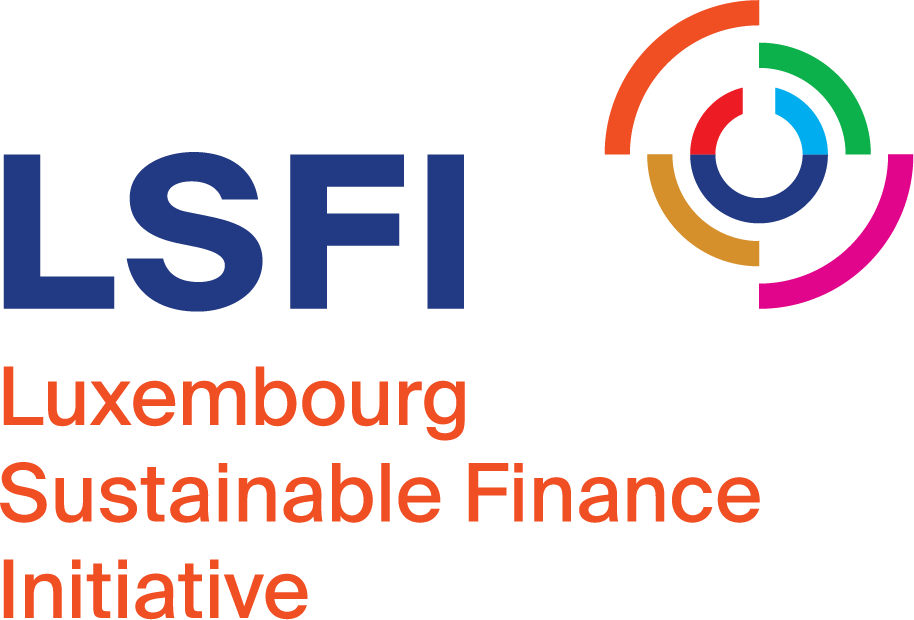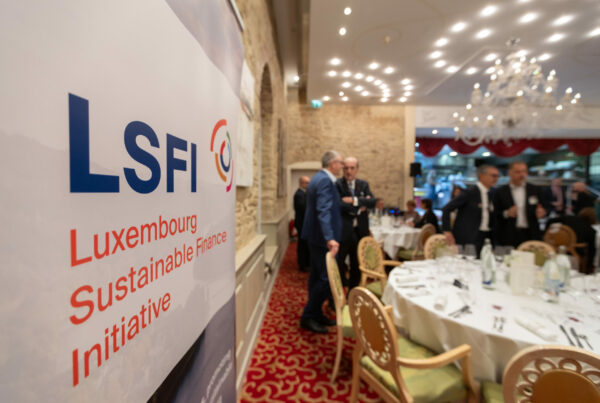Climate change refers to long-term shifts in temperatures and weather patterns. As stated by the IPCC’s latest reports, since the 1800s, human activities have been the main driver of climate change, mostly due to burning fossil fuels like coal, oil and gas. Tackling, mitigating, and adapting to this global issue is a priority that requires collaboration and action.
The Conference of the Parties (COP), whose 27th edition is closing today, is a two-week international event where government officials, world leaders, scientists, and civil society, among others, present their commitments to cut greenhouse-gas emissions and discuss how to tackle climate change.
This month, we have interviewed Jimmy Skenderovic, Senior Adviser at the Luxembourg Ministry of the Environment, Climate and Sustainable Development, and Lennart Duschinger, Adviser for Sustainable Finance at the Luxembourg Ministry of Finance, to discuss about the significance of COP nowadays, how this summit is structured, and what’s the role of finance to help tackle climate change.
(LSFI) What makes COP so relevant, and why is it necessary to hold this international conference?
Jimmy Skenderovic: The Conference of the Parties is probably the biggest global conference where all the world leaders, ministers, national representatives, experts and civil society come together. It is key to have this conference every year to bring debate around this very relevant topic. Nowadays, with the current energy crisis, the war in Ukraine as well as the apparent effects of climate change, it is of special significance to keep the debate alive and ongoing. However, I would also like to remark that COP is not the only event where negotiators from all the countries get together to tackle these issues. There are meetings throughout the year to work on the COP program, decide on the topics to be discussed, exchange on strategies, debate climate change and, especially, work on implementing the decisions. It is an ongoing process.
Lennart Duschinger: Indeed, COP is an occasion for all the involved countries to meet and have constructive discussions. It is also an opportunity to understand the differences as well as the similarities among the participants. In this way, the problem of climate change becomes more tangible and something you can tackle together as a group.
We tried to have similar negotiations online, but it was challenging; that’s why having a physical meeting is very important for these types of intense talks that 197 countries attend, and which often go throughout the night. It is also necessary to be as inclusive as possible in order to make sure to have all the important voices at the table, such as NGOs, youth activists and indigenous groups amongst others.
One downside of COP is that there are two main blocks, developing countries on the one side and developed countries on the other. Psychologically the whole set-up of the COP is in a way that encourages distrust and fights instead of creating an atmosphere of trust and cooperation.
How does the decision-making process work at COP? How is the agenda defined?

Jimmy Skenderovic (Senior Adviser at the Ministry of Environment, Climate and Sustainable Development)
Jimmy Skenderovic: The decision-making process is challenging and demanding as there are different working groups and streams taking place at once, and many topics being discussed. Likewise, many negotiators are involved, maybe with different interests, making coordination cumbersome on some occasions. Usually, countries gather in groups according to regions or interests, and bilateral meetings among states also occur to find common approaches. For example, at the EU level, all the countries meet daily to coordinate their positions and share updates.
Decisions are made by consensus between the parties, which is the main reason why this process is so complex. The agenda might change sometimes. For example, this year some additional topics were added to the agenda and other were withdrawn. COP27 is the African COP. Therefore, we can see that there is special emphasis on issues that aim to answer the questions of how to find the necessary funding to adapt to climate change as well as to confront the loss and damage issue.
At COP, there is a day dedicated to finance. What is the Finance Day about?

Lennart Duschinger (Adviser for sustainable finance at the Ministry of Finance)
Lennart Duschinger: One of the reasons for a specific day about finance is that after holding these negotiations for nearly 30 years, it has become evident that you cannot have these international negotiations without specifically addressing the issue of money. There has been an evolution in the negotiations, from initially focusing on more general definitions to what we need to do in order to solve the crises to how we concretely finance the transition.
So Finance Day focuses on speeches and events about the financial sector’s role in curbing climate change, mostly through regulatory policies from governments as well as voluntary commitments from the private sector.
The meeting of the “Coalition of Finance Ministers for Climate Action” is also on Finance Day. This coalition has existed for 3-4 years and now gathers around 80 finance ministers who come together to speak about what they do, where they encounter issues, how they address them and they exchange their experiences and solutions. It is an occasion to learn from each other, harmonise our approaches and accelerate the transition to net zero.
What are the main topics of discussion at this COP27?
Jimmy Skenderovic: I would like first to clarify that the objective of COP is not to come up with new and big resolutions every year. Some COPs are foreseen to focus on implementing what was decided on the previous year or to set up the basis to start the negotiations on what will be discussed in the next ones. This is one of those COPs where the focus is on following up on the implementation of some key topics that were agreed upon last year in Glasgow.
This said, two of the most significant topics this year are finance and the adaptation of national NDCs to strengthen the pathway to 1.5 degrees. On the topic of finance, there are 3 or 4 main topics, for example, working on the new climate finance targets. In 2009 it was agreed that developed countries would channel a hundred billion dollars per year by 2020 to developing countries to adapt and mitigate climate change effects. However, while the EU has reached this objective, this has not been the case for all the states. Another topic under discussion at the moment is what’s called “loss and damage”. This is the first time this topic is on the COP agenda. This topic means that developing countries are asking developed countries to pay and establish a separate facility to finance the losses and damages due to climate change. One of the questions regarding this topic is how to do it effectively; for example, would it be best to set up a new facility or use an existing mechanism instead?
You have attended COP several times, what advancements have you observed?
Jimmy Skenderovic: In general, what I have observed since the COP held in Paris in 2015 until now is the level of awareness regarding climate change. Back then, it was not unusual to meet parties or negotiators who did not believe in climate change or did not find it a worrying issue. Currently, the conversation around this topic has considerably evolved and intensified, and this is a topic which is not new to anyone. All the involved parties have now acknowledged this reality. While the actions to be taken might vary or diverge, we are now all pushing in the same direction. This is a considerable change from what was not that long ago.
If I focus on this year, I can observe that the current energy crisis we are having is having an impact on the discussion.
Why is it essential for Luxembourg to actively take part in COP?
Jimmy Skenderovic: Luxembourg has and is very active in climate negotiations. While we are not the biggest delegation at COP, we have priorities, and we need to sit at the table and discuss with other countries and partners. On the one hand, our contributions have been substantial on several occasions, and we have facilitated a few processes, for example, in Paris at the COP21, in Katowice at the COP24 or last year in Glasgow at the COP26. On the other side, it is also important for us to bring some of Luxembourg’s initiatives, for example, by organising different side events with our stakeholders. This helps us be visible as a country and also showcase the several initiatives we have in place and strengthen the relations with the partners.
What are Luxembourg’s main Climate Finance Initiatives?
Lennart Duschinger: I would highlight the Luxembourg-EIB Climate Finance Platform and the International Climate Finance Accelerator (ICFA).
The Luxembourg-EIB Climate Finance Platform (LCFP) is a joint initiative between Luxembourg and the European Investment Bank to mobilise and support investments in international climate finance, focusing on climate change mitigation and adaptation. The LCFP aims to increase the impact of climate financing by mobilising private sector investment, thereby acting as a catalyst for additional financing. So far we have invested 40 million euros in climate funds, with the goal of mobilising around 2 billion additional euros from private sources.
The ICFA is a public-private partnership set up in 2018. It’s a unique two-year programme that accelerates emerging fund managers focusing on key areas within climate action. The selected fund managers receive access to financial support, trainings on a wide range of topics, an experienced coach and other benefits[1]. So far we have supported around 28 climate fund managers who have raised nearly 300 million dollars in climate finance.
Why does the 1.5C target matter so much?
Jimmy Skenderovic: As clearly stated by the scientific community and the latest reports, such as the IPCC one, it is scientifically a fact that limiting global warming to 1.5° can prevent us or limit tremendous climate change impacts. These impacts would go beyond temperature increases and would result in health issues, food security, water scarcity, and climate migration or conflicts, among others. Limiting the temperature increase to 1.5C is not only a political target, but it is also a goal needed to safeguard our and the planet’s future as well as the next generations.
Why is finance so relevant to tackle the climate crisis? How is finance advancing towards tackling climate change?
Lennart Duschinger: Over the last years, we have started to rediscover that one of the main purposes of the financial sector is to finance the real economy. There is an increasing global awareness regarding the fact that every investment has an impact on the real world. We create the world around us by investing our money. A lot of people forgot that causal link.
Rediscovering this helps us understand where the issues we face today come from and how we can tackle them. Finance and particularly impact finance are the tools that we, as a global community, can use to solve these issues.
More concretely, between 3.3 and 4.5 trillion dollars need to be invested per year if we want to achieve the United Nations Sustainable Development Goals (SDGs). At today’s level of both public and private investment in SDG-related sectors, there is an annual funding gap of around 1.7 to 2.5 trillion dollars. So we are not reaching our targets.
Global energy investments currently stand at around $2 trillion per year or 2.5 percent of global GDP. This will have to rise to around 5 trillion dollars or 4.5 percent of GDP until 2030 and stay there until at least 2050 to reach net zero emissions by 2050. So we need to catch up with these investments quickly.
In the traditional financial sector, the investment decisions are based on checking the risk and return profile of an investment. Now we are slowly moving into expanding that approach. Usually, the first step is to add exclusion criteria (i.e., not to invest in particular sectors). The next step is to look at environmental, social and governance (ESG) aspects of investments, in addition to looking at risk and return, to ensure that the investments we do have less of a negative and more of a positive impact. The next stage is to move towards investing with a specific positive impact in mind, while measuring the actual impact on the real economy, people and the environment. This is what is called impact investing.
In order to effectively tackle climate change, the financial sector needs to move a lot more into impact finance. But the financial system participants don’t have the knowledge or the tools to do that yet and that’s what we need to develop over the next years. This will require changing people’s attitude, skills and creating and systematically using the right tools. It is a long process, and it will take some more time before people get used to this new way of functioning, but the movement has started and has, fortunately, become unstoppable. So it’s not anymore a question of if, but of when.
More about COP
COP is the decision-making body of the UN Framework Convention on Climate Change (UNFCCC), an international treaty to fight climate change signed in 1992 and which has been ratified by 197 countries to date. This year it celebrates its 27th edition.
https://unfccc.int/cop27
[1] https://www.icfa.lu





